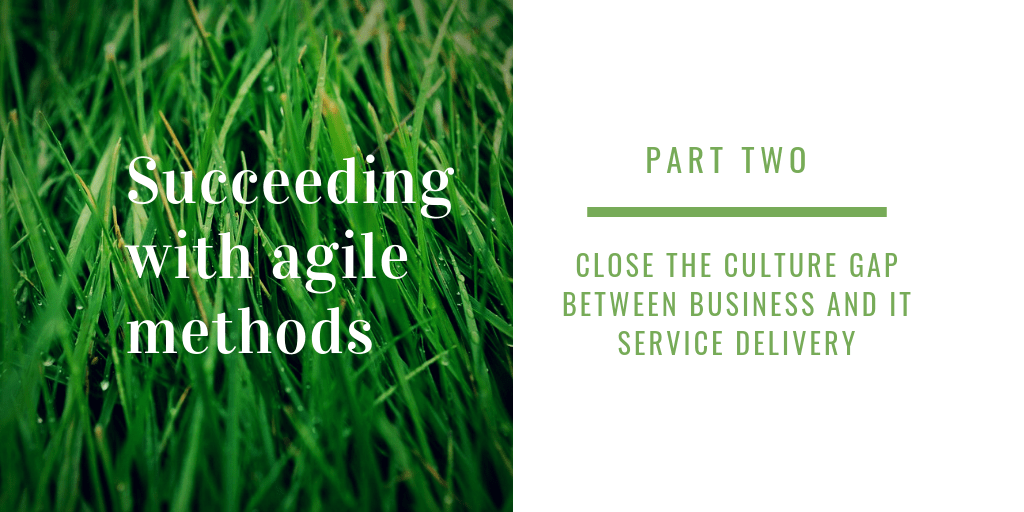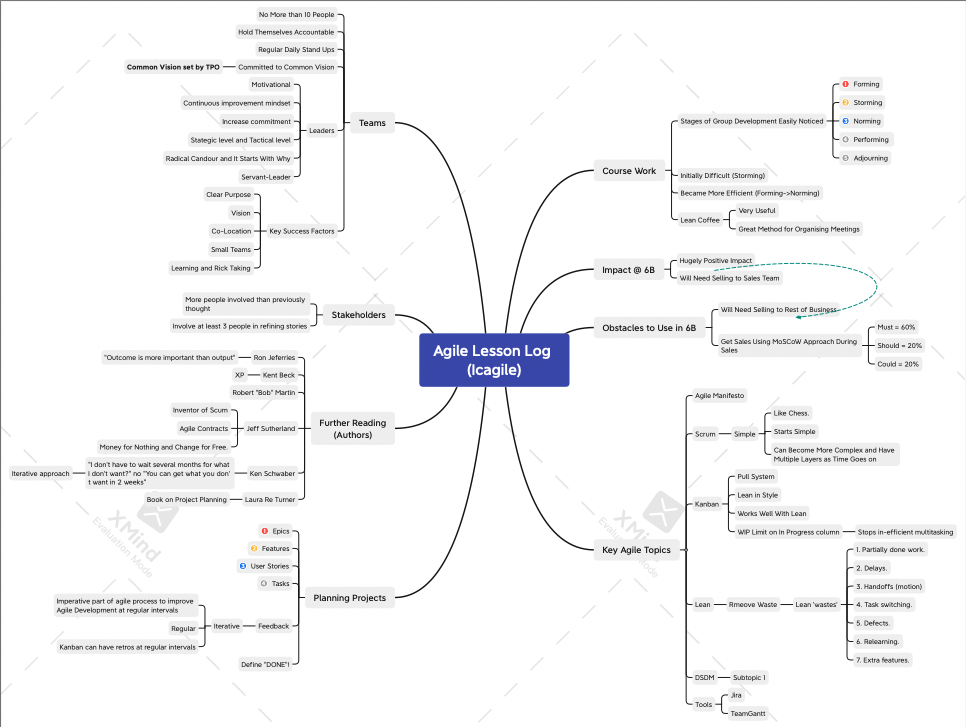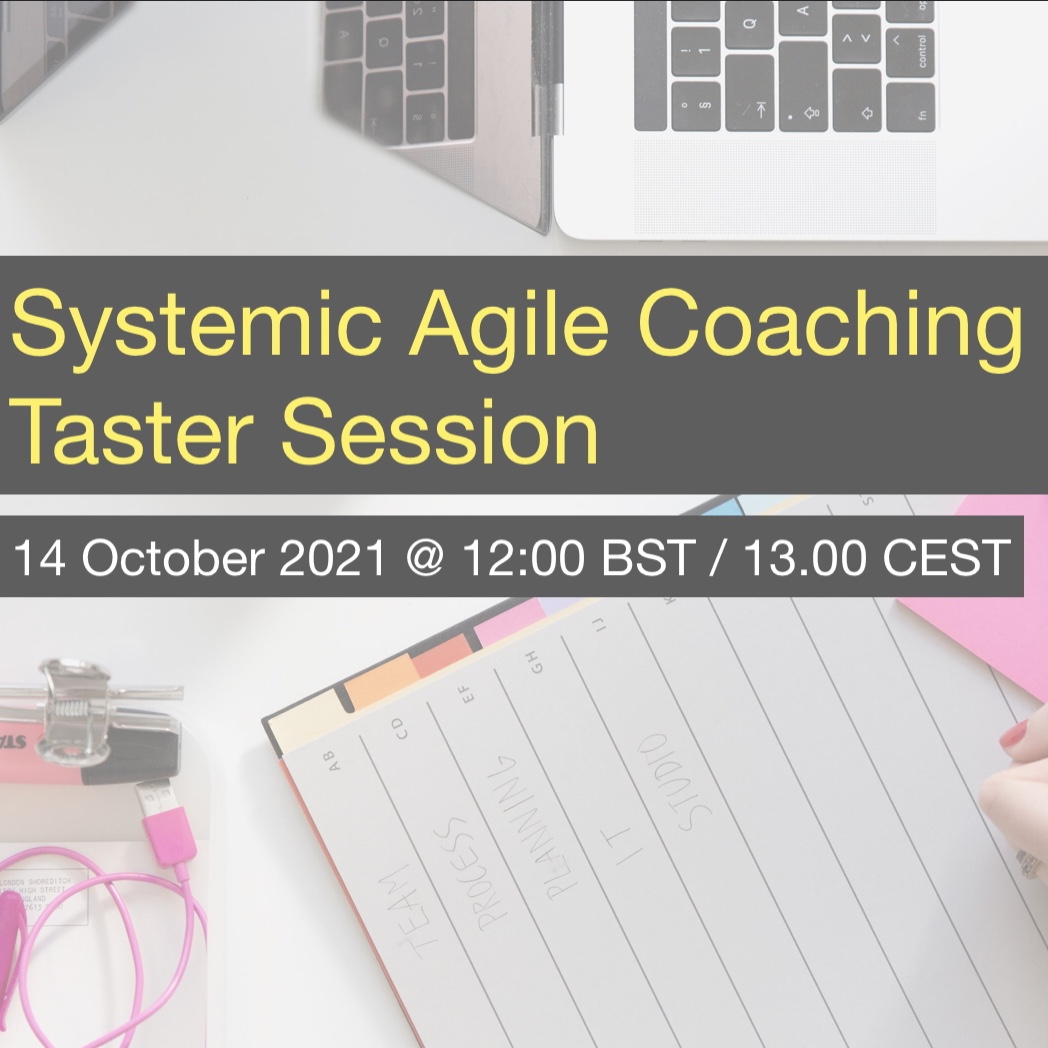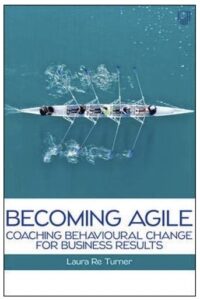
Paddy Dhanda of QA Learning interviewed Laura in November 2021 when her book Becoming Agile: Coaching Behavioural Change for Business Results was released. Listen to the podcast here.
Transcript
Today’s episode of The Peaky Agilist Podcast is proudly sponsored by Emergence, the Journal of Business Agility, brought to you by the Business Agility Institute. This quarterly publication brings you inspiring stories from the most innovative companies and explores themes of new ways of working, reclaiming management and humanising business. Full details of how to subscribe and receive a 10% discount is available down below in the description.
So today I’m joined by a special guest, someone who I’ve worked with and we’ve been exchanging a few emails and thoughts around Agile coaching and coaching in general. It’s the amazing Laura Re Turner. Hey Laura, how are you doing?
Hi, I’m good thanks. I’m good when anybody calls me amazing. That’s a great start.
You are, you are. You’ve been a huge inspiration for me. It’s always nice to meet people that are so passionate, especially about helping others.
So for others that maybe don’t know about you, it’d be great if you could tell us in your own words a little bit about your background, about what you do.
Yeah, well, we could spend an hour on that. You know, I’m sure you could spend an hour with anybody on their background. And in fact, like most coaches, when I first start working with a coachee, spend the whole first session on background and how the person got to hear.
Yeah, how do I select? It’s really hard. Well, as you know, I got a chance to speak to the great group from Coaching Agile Journeys yesterday, and I found myself talking about my experience of driving across the country from New Jersey to San Francisco, where I accidentally landed in a dot-com in the early 1990s.
Stay in the Loop!
Subscribe so you never miss our updates.
And it was just literally a case of right place at the right time. And I was supposed to be a writer and never expected to be learning programming. You know, I was all geared up towards, you know, being a journalist, and it never happened.
But this has been a lot of fun. So it started in the early 1990s. And I could have been a great software developer for the rest of my life, but something made me want to progress and move up and get promoted until I had a couple of program management roles in big software companies.
And one day, I said to my husband, that’s it, I have to do something else. You know, I really have to do something else. And he said to me, I see you as like a teacher or a trainer or something.
And I went, you’re absolutely out of your mind. There’s no way. And it’s really interesting that we’re talking today because I literally just started picking up the phone and calling companies that I thought I’d like to work for.”
And one of them was QA. And that was the start of my transition to helping others. And around the same time, I started my master’s degree in coaching at Henley Business School.
And so those two streams continued in 2014. And six years later, it’s still going. And when you speak to people about how hard it is to start a business, they say, are you profitable?
Are you still going? Are you still running after five years? And I go, yeah.
And they go, then it’s going fine. So here we are. And I suppose by that definition, it’s going really well.
But it’s an awful lot of responsibility running a business, whatever the size is. Every day, there’s nothing else on your mind. And I was just working with a coachee this morning who’s transitioning into a new business.
And so it’s a bit of career coaching, but very purposeful. What kind of purposeful business and purposeful life the person’s going to have. And I said, when you start a new business, it has to be something that you’re passionate about every second, every minute of the day, because you’re going to have to sustain yourself and keep yourself going all the time.
Sometimes there’s nobody else, your spouse, kids, which we don’t have any kids, but parents, best friends, nobody else is going to be as passionate about it as you are. So I suppose that’s a very long introduction, but you did call me passionate. So there you go.
Oh, no, that’s great. And yeah, absolutely. There seems to be a wealth of experience there and you’ve sort of really done it from the ground up as a software engineer, sort of really living and breathing, building those sort of software products.
And then as you mentioned, you sort of moved more into program management and now coaching. So that’s an interesting sort of transition, I guess, as well. And the other thing I was going to ask you is you’re now based in the UK.
So what’s the story about you coming all the way from the US over to here?
Yeah, when I was with the guys from Coaching Agile Journeys yesterday, of course, a lot of them are Americans. It was wonderful to meet lots of non-Americans as well. I didn’t realize how big their community was.
But every time I get with an American audience, I feel a little bit nostalgic for home. I grew up in New Jersey. And when I graduated from college, when I left uni, I moved to San Francisco.
Good stuff. So we talked a little bit about coaching and I know coaching is a big passion of yours. So and coaching has really become, I would say, a pretty critical service for many professionals out there.
But if there’s anyone who maybe hasn’t had the opportunity to be coached or is thinking about it, what are some of the benefits that coaching can provide?
Yeah, yeah, wonderful. Well, I mean, I think the listeners of your podcast are coming from an agile development perspective, people who are looking to create change and transformation in organizations. And a lot of the work that I do is in that context.
And certainly, the book that’s coming out on June 8th is set in that context. I mean, for me, it’s about I describe it as creating sustainable change. You can bring a consultant in who blankets the place with new processes and tools.
And things seem to have a short-term improvement, maybe a little bit of a productivity boost and a little bit of a morale boost and the feeling that things are going to finally start to move in the right direction. But unless people can think for themselves and understand the meaning behind the rules and processes and how to tailor the approaches, then it doesn’t last. And so I use the word sustainable in this context to mean that people can think for themselves and keep adapting and tailoring the approaches to be fit for purpose for the people, the types of products and services that they build so that they can keep using it and think for themselves longer term.
I think good coaching helps people think for themselves, that the transformation even goes on long after the work is done.
Got it. Yeah. No, I think especially that element of thinking for yourself and I guess making mistakes as well and allowing you to make those mistakes in a safe way.
I think one of the things I do hear a lot of when I speak to some of my network of coaches, they say often the organization is really looking for a consultant, but they label it as an agile coach. You turn up and unless you’re giving answers, many clients will almost expect you to go into solution mode. Is that something that you’re seeing much as well?
Thank you for that question. You know me and you know the answer to that question is emphatically yes. In fact, I think a lot of the work I’ve done recently on building my own company brand with my own products and services and the book are about trying to break away from that consulting approach.
And there’s a place for consulting and there’s a place for best practices. And this is what great looks like in this sector and this type of business and solutions to problems. I think there’s a place for that.
When we’re asking people to think for themselves and learn how to take the tools and know what’s the right mix and how to tailor and now how to deal with the complex world where every problem isn’t fitting a template, then true coaching is the solution. And years ago when I was working as a trainer at QA and then as freelance, I was applying for roles. I was applying for agile coaching roles.
By that point, I’d already started my master’s in coaching, which has nothing to do with the agile world, at least not explicit, at least not with a capital A. And I thought, why am I not getting these roles? I’m not putting the right keywords in or something’s wrong.
And then I realized they weren’t looking for someone like me. They were looking for someone to, I don’t know what, teach them user stories or something, not to be dismissive about user stories. They’re a great tool that help people stay minded on your customer.
But for me, change and transformation are about a lot more than that. So I didn’t fit the mold. You can’t blame the buyers of agile coaching too much because perhaps that’s their understanding.
Scrum Master is to them the new word for project manager. So maybe agile coach is the new word for a consultant.
Yeah, that’s an interesting one.
Yeah. Well, yeah, we can go down that rabbit hole as well about project management and Scrum as well. But I know that’s not why we’re here.
But maybe the buyers of coaching are just writing the role descriptions in the way that they think they are supposed to. But it doesn’t help me because I don’t fit the mold. Because I think what organizations need is something else.
So it’s been a bit of an uphill battle for me over the last few years to get those two things to join up.
Got it. And so moving on to your book, so Becoming Agile, Coaching Behavioural Change for Business Results, what an awesome title.
So I know you and I were just talking about things offline at one point, and you were talking about the book is structured around the six lenses. So could you tell us more about the book generally, and then also what are those six lenses?
Yeah, wonderful. When I did my masters, we had a day with a very inspirational leader in the professional coaching world named Peter Hawkins. He’s pretty well known to us here in the UK, if anybody works as a coach here.”
And I don’t think many people in the Agile space know about him. He tends to come through a lot of the coaching programs and universities. And he’s also currently the president, but outgoing president of my coaching association where I have my accreditation, which is called Apecs.
And I’ve also done some additional training with him on systemic team coaching, of which the six lenses is only one very small part, actually. But for me, even though it’s small and doesn’t really describe an entire engagement approach for systemic team coaching, I found it useful for helping to raise awareness of seeing the entire system, especially in an Agile context where so many Agile coaches tend to focus in on the team and just the team and how to shift work from left to right, be more productive. When actually when we start to drill down under some of the things that become visible on the on the Kanban board, we realize that the root causes are in leadership style or stakeholders outside the team who are expecting perhaps different things.”
And the amount of change taking place on the on the requirements on the work to be done based on the macro or external business factors, you know, the political and economic arena and so on. And new legislation and I felt it was important to raise awareness of the whole system. I don’t claim that the Six Lenses represents all of the systemic team coaching approach because it really, really doesn’t.
But it’s a starting point for kind of opening up and widening people’s idea of the wide angle lens that we need to have in order to really address all of the things that need to be addressed to create change.
Stay in the Loop!
Subscribe so you never miss our updates.
Got it, got it. And would you say the book is aimed at particular types of agile coaches? Could they be enterprise agile coaches?
Or is it pretty much for anyone who’s interested in agile coaching?”
Yeah, it has a real natural fit with enterprise agile coaching. And this year I created a course which I branded systemic agile coaching to set it apart from the other enterprise agile coaching courses that are on the market to emphasize the systemic coaching element that is grounded in perhaps different approaches and methods than my competitors. But in fact, the book is aimed at professional coaches who don’t have the agile development background, even though I know that there’s hopefully going to be a huge amount of interest from both professional coaches who have only heard the word agile and think it’s a good thing, as well as people who identify as agile coaches and want to increase their professional coaching skills, but also internal leaders who see a coaching style of leadership as being valuable and now want to bring in some of the tools to support their teams and other stakeholders.
So I’m really optimistic that these different audiences are going to gravitate to the book and find value in it. However, I say in the introduction to the book that it’s aimed at professional coaches because what I don’t do and there wasn’t space in the book for is a discussion of professional practice and coaching supervision and ethics and contracting with clients. And that’s a piece that professional coaches, hopefully, you never know, but we’ll assume, we’ll safely assume that they know that they need to do.
And the idea of an ethical code is just starting to germinate in the agile coaching community. But so to get around that discussion, I said the book is aimed at professional coaches. So I think that’s a really important kind of disclaimer.
Yeah, no, thank you for that. Absolutely. I think, you know, there is, it’s not a regulated profession, I guess.
So it’s tough to know, you know, if everyone is following a consistent approach and contracting in the ethical side is actually really, really interesting. I know IC Agile have been doing a lot of work in that space at the moment. Shane Hasty has sort of been looking at that, hasn’t he?
So that will be really interesting to see how that sort of pans out for the agile community. And so…
Thank you. I’m sorry to interrupt you. It’s important to say that even professional coaching isn’t regulated.
So we have very similar issues. And all of the kinds of issues about do I get accredited or not? Do I follow an ethical code?
And how do I contract with my clients? And professional coaching are just magnified among agile coaches. So I’m sorry to interrupt you, but I think it was important to say that.
You said agile coaching isn’t regulated, but actually professional coaching isn’t either.”
Yeah, great point. Great point. And so in terms of the six lenses then, Laura, would you say there’s one or two that are particularly more important than the others or are they all of equal importance?
Oh, they’re of equal importance because one looks at leaders, two looks at teams. One looks at stakeholder interfaces. You have the external business environment.
They’re all relevant. They’re all because at any given point in a day, if you observe a team, they’re going to be making decisions and trade-offs and agreeing to things based on lots of factors in the business environment. And so the lenses is simply a way to help us think about the complexity.
This is really about complex adaptive systems, isn’t it? And about, you know, being asked to do a particular item of work from someone who’s measured in a different way to how perhaps that person over there is measured. And they’re all important.
They’re all important. Yeah.
Got it. Got it. Thank you for that.”
And I want to know a little bit about maybe the sort of lead up to the book. So what was your sort of big motivation? Why was this a particular topic of interest for you?
Yeah. Yeah. What a good question.
Well, how did it start actually? I was doing some voluntary work for a local careers charity. And as part of that, they offered coaching.
And I offered pro bono coaching through them for a few years, actually. We got a supervisor who recommended that there was a terrific workshop that we all attend. If we wanted to and could afford it because there wasn’t budget to send us.
So I self-funded myself on a course with Julia Vaughn Smith and Jenny Rogers on understanding how life trauma shows up in people’s agency and ability to make decisions and progress with their life. And it’s something that normally shows up in therapy. But Julia Von Smith identified that this also shows up in people and coaching.”
And at least if we can identify and know how to respond appropriately as coaches with our level of training, that that would be a valuable part of our practice. And so I mean, I know this is a podcast for Agilists, and so this really feels like it’s going out on a limb a little bit. And I hope I haven’t lost all of your listeners by this point.
But perhaps it’s also interesting for people to recognize that the amount of training and my lens on how I work with people is very, very wide and well outside of the Agile space. Anyway, I went to that workshop and found it mind-blowing. And Julia had just had a book published by Open University Press.
And of course, Jenny Rogers is a series editor for the coaching book series at Open University Press. And they had invited one of the Open University Press editors who I was chatting to over a coffee. And she said, you should write a book for us.
And that was a few years ago. So it was a workshop I didn’t need to attend. That was probably a little at the time a little bit fringe to what I needed to be able to do my pro bono work.
And I tell you, Patty, it was one of the very few times in my life where I feel I was rewarded for doing the right thing. You know, it wasn’t a networking meeting. It wasn’t about looking for work.
I wasn’t pitching anything. It was just serendipity over a coffee. And that led to obviously more conversations and, you know, the process of contracting for and writing a book can be a long one.
So that was a few years ago. So this has been a few years of work, a few years in the making.
Wow. I always have so much respect for anyone that publishes a book. I mean, I can’t again imagine the number of hours, the pain, the research, you know, all the different dilemmas you must go through.”
I mean, I was looking at your cover of your book. I’m sure even choosing the cover is a big decision. So it’s always amazing to hear people’s stories about how they arrived at, you know, picking that particular idea and even sort of deciding to do this crazy thing, which is to write a book, which is no easy feat.
But that’s awesome. It was meant to be, Laura. Sounds like it was meant to be.
I hope you’re right. Yeah, the publishing date was pushed out by about a week. So it’s now the 8th of June.
And the really amazing people, I know I’m saying this again from Coaching Agile Journeys, who I met yesterday. What a great session that was. Lots and lots of people went to my landing page to go ahead and order the book.
And yeah, it’s going to be an exciting time. And yeah, it’s wonderful.
Oh, super. And actually, let’s pick up on the cover then. So can you tell us the story behind the image that you chose?”
Were there other sort of options that you were looking at or was this your favourite throughout?
Oh, I wish I had an inspirational story there, Patty. It’s a pretty boring one. I shouldn’t say that because what’s boring to me may not be to other people.
But when I finished the main work on the manuscript last year and submitted it, you know, by my submission deadline, I’d met a milestone, even though the publisher hadn’t officially read it and accepted it. Between you and me, we know when we’ve done the work and we haven’t. And I wasn’t worried.
So I’d submitted it and I went out and bought myself a new iPhone and doing lots of photography. I like lots of nature and trees and I like the post-production and Adobe Lightroom and I like doing all that stuff. And I submitted a couple of photos to them for the cover and they went, we’ve got tons of covers that look like this.
Nice try, but no. And then they offered a couple of ideas and this was the one I picked. So no, the really smart people at the publisher knew what was right.
They gave me a few options and I picked.
Awesome. And so what would be great is if we could maybe look at one of those lenses and if you could maybe break it down a little bit. So if someone is wondering, I understand at a high level that there are these different almost stances or as you mentioned, they are lenses.
But how do I bring that to life a little bit for the listeners? So is there one that you could pick and then maybe we could go a little bit deeper into that?
Brilliant. And I’ve got some notes on that actually that I think would be helpful. Well, let’s see.
Why don’t we start with lens one? Because what I’m doing is encouraging organizations to start down this approach with me by first working with individual leaders one-to-one. And I know lots of agile coaching is about team coaching, but I love the individual coaching and it’s often a great place to start because there’s a little bit more intimacy where individuals through trust and explicit confidentiality agreement are happy to talk about some of the real thorny challenges and I think you get to a lot of the problems quite quickly.
But I think that’s a great place to go because I think there are a lot of leaders struggling with how do I now transform into someone who really has empowered teams where I’m really a facilitated leader and I’m trusting the team and where I can give them enough slack and space to allow them to do that creative knowledge work that everybody talks about but without me getting my wrist slapped for not being on top of things and not catching problems and all of this. It’s really difficult for individual leaders, especially in the agile space, because so many people came from software development roles and they were technical architects and they had some interpersonal skills or some maturity in certain areas and now are in leadership roles where being the expert is no longer what’s needed. But out of history and habits and what got me here, they continue to work in that way.”
But really paradoxically, we need people to do exactly the opposite now. How do you create that behavioral change to being a networking leader and someone who helps your team find resources and admitting you don’t have all the answers so that your team members can admit they don’t have the answers and ask for help when they need it, and really empower the team by giving them permission to make mistakes and try different things? It’s revolutionary for a lot of people, especially in technology.
And so what I did in Lens 1, which is the individual lens, is I mapped coaching approaches from professional coaching that I think are relevant to leaders in this domain. And so there are things like critical thinking, evaluating options, being able to look at pros and cons, getting input into understanding better decision making through critical thinking. And I mapped some coaching techniques to that competency in the book for Lens 1.
And I’m actually looking at my notes here as well while we talk. The other thing I included in that chapter for Lens 1 is an acceptance of not knowing. We say in coaching, not knowing, not knowing the answer”
People like Brene Brown have done a great job at describing this as vulnerability of saying, yeah, actually, that’s something that I don’t know either, of not having all the answers. Also in that chapter, I wrote about resilience and adaptability and where resilience comes from. And really, Carol Pemberton, who is a terrific executive coach and also another author from Open University Press, really gets the credit for that because I contributed some of my own material.
But I had to read her book quickly to understand the essence of it and summarize the bits that I thought were relevant in this domain. So Carol Pemberton really gets all the credit for that. And managing stress.
Yeah, you and I both understand about stress. And we started the session today with talking about four or five different competing priorities in any given day and just ways to manage stress. Of course, there’s so much more to working with individuals in coaching.”
A lot of those techniques are global and they’re relevant to any human. But I think these are the ones that are particularly needed in this domain. In which we work in the so-called VUCA domains, you know, the volatile, uncertain, complex and ambiguous.
And that mnemonic is used a lot to describe environments that are subject to lots and lots of uncertainty and change. In other words, any organization that would choose to use an agile approach in order to respond to change is a VUCA environment. And I don’t think that that link is also understood clearly.
That so many organizations think, well, we’re going to do agile here, which usually means scrum, ignoring the fact that there’s a half a dozen other approaches, without being consciously aware of why. Maybe it’s to make the company look more attractive to sell. Maybe they’re looking to find a buyer.”
Or maybe it’s because they think to attract the best talents, they need to say, agile, agile, agile. But the reason for selecting an iterative approach to developing any products and services, whether it’s software or not, is to be able to respond to change as a way of reducing the risk of getting hit inside by something that changes in the external business environment, the market, legislation that we didn’t plan on and don’t want to have to deal with. But nevertheless, if we want to stay in business, we have to respond to change.
So I think hot on the heels of Lens 1, working with individuals, for me, it’s Lens 6. It’s the macro lens. That’s the one that I go to over and over and over again because the writing is on the wall.
I mean, we have so much news about the developments of technology, AI, the environmental changes that are coming up and the number of companies that are getting behind the carbon reduction targets and making real commitments in that area and looking for solutions by becoming B Corps and signing up to business declares and all the other initiatives that are available. The writing is on the wall. If we took our heads up from the day-to-day stress and tuned into some of those trends that are coming, not far on the horizon, we could do more than just respond to change.
We could anticipate and take advantage of some of the terrific, exciting changes that are on the horizon. For me, it’s Lens 1 and Lens 6, and everything in between is the how-to. I guess I’m just realizing that now, talking through it with you.
For me, it’s starting with Lenses 1 and 6, really.
Awesome. Great example of coaching. Not that I was coaching you in any way, but it sometimes just helps to talk things through, and then all of a sudden you start to sort of put the pieces together and shape them, but no, that’s really nice, Laura.
Thank you for that. I mean, there is so much goodness in there. We could probably spend another hour just talking about that one lens, because those elements that you mentioned about leadership, like I have to hold up my hand when I’m running Agile training.
I give the leaders a really hard time. It’s always their fault. Every report you look at is why did Agile fail or what is the biggest challenge?
It is because of leadership, and I just think leaders are under so much pressure right now to sort of, I guess, demonstrate these approaches, these values. For example, Bill Joiner’s Leadership Agility, it’s a phenomenal book that I often turn to, and it’s that sort of catalyst leader. Sounds great on paper, but how do you actually get to be like that?”
That’s a really tough ask. So I think any tools, techniques that we can offer that help people to get closer to that can only be a good thing. So I’m really pleased to see that your book’s actually got a big element of that included.
So I can’t wait to read it.
Thank you. And I make reference to Bill Joiner’s work in the book as well. And I summarized the competencies of an agile leader in the book because it’s so important.
It’s so important.
Awesome. So I guess then looking forward at the sort of the future of agile coaching, I guess, what would you say would be the way that you would want the role to evolve? We’ve talked a little bit about sort of some of our gripes about agile coaching around, you know, people expecting them to be consultants.
But how would you like the role to further evolve?
Yeah, what a great question. I’d like to see more stakeholders get involved in helping to define how it evolves, in fact. And I attended a session with Shane, hosted by Agility Lab in Copenhagen, who is having me as a guest speaker very soon, actually.
That’s a terrific community. They’ve had some incredible speakers, but they hosted Shane a few months ago. Where he talked about the draft Code of Ethics.
Of course, he does lots of work with IC Agile, but IC Agile is about the curricula and training standards. They felt it wasn’t the right home of the Code of Ethics. They chose to ask Agile Alliance to be the custodian of it, where you can go and look for the working draft.
I’ve also blogged about it, and I linked to it from our website, the Future Focus Coaching website. I’d like to see Agile Alliance build a community around evolving that and standards for Agile coaching. I think we need more input and hopefully an international community as well.
I think Agile Alliance, in theory, is the right place. I don’t know what resources they have to do it. That’s really a question and in no way a criticism.
I genuinely don’t know, but if anyone from Agile Alliance is listening, I’m offering to help.
Awesome. Oh, no, that’s great. Yeah, that would be really interesting.
I’ve got to talk, actually tomorrow I’m doing, I’m going to talk to a bunch of professional coaches to introduce them to Agile coaching because there’s some interest. I was sort of looking through the State of Agile coaching report that came out recently. It’s really interesting to see just how the profession is now starting to formalize because it hasn’t really been formalized for that long, if you think about it.
If I think about Lisa Adkins’ book, Coaching Agile Teams, was probably my first reference point. It’s a profession. It’s actually a thing rather than it just being someone making up this job title.
It’s good to see it mature, I think, in the right direction. That sounds great.
It’s not just coaching. It’s mentoring, facilitation and teaching. It’s important to be pretty good at all four of them and to know when to switch to be in service to your client.
I’m running a mentoring program now for Agile Coaches, which just kicked off in April. We’re just seeing what kinds of issues and needs emerge from the cohort. We’re going through the competencies now and just filling in the gaps.
I want to do more of that. That mentoring for Agile Coaches program is really great not just for Agile Coaches, but for anybody who’s in a change and transformation role. If your role is called project manager, if you’re change manager, if you’re a team leader, and you in some way need to facilitate change in an Agile way, I really hope some of your listeners get in touch because I think that fills a really important gap in the market.
I conceived it as a way to pick up on people’s training on either the Agile coaching track or the enterprise Agile coaching track from IC Agile. But there are inevitably people joined who didn’t take the course, but had the basic knowledge and now want to raise their game. I don’t know of anything like it on the market and that’s my shameless plug for that program, which has just got off the ground and I think is going to fill a really important role.
I hope it catches on.
Awesome. If you can send me the link, we’ll include that in the show notes so people can get signposted to that. It sounds really, really awesome though.
I think, again, as the role is maturing, there’s needs for all of these services. I’m sure lots of people will be really, really interested in that. We’re going to wrap up now.
Laura, we’re almost at the end of time. Let’s get a few words of wisdom from you. If you could give your younger self some advice, what might that be?”
Oh, goodness. You said you were going to ask me this. Of course, I didn’t think about it at all.
Once you look backward. You did it. You asked it.
I can’t complain because you warned me. You warned me.
I would say take chances sooner and earlier that there’s no point in waiting for some point in time where we, you know, I think when I, I hope I’m making sense. When I was younger, I had the sense that somehow I would get older and there would be a point in time at which I would have enough experience that I could make great decisions all the time and I would be really successful. And then I realized at some point in my life recently, you know, sort of after 40, I think it was that that’s never ever going to happen.
That I’m always going to have moments where I fall on my face and you’re always going to have moments where you look stupid and not just because you’ve had too many cocktails, but because you screw up. And I wish I’d known that much, much, much earlier in life to go ahead and take risks and don’t be afraid of looking stupid. When I did my master’s degree, I’ll never forget a few of us had a session with the amazing tutor, Nigel Spinks from Henley Business School, who taught us how to do research at the master’s level.
And we got into a room and I just asked loads of questions. And what about this? And tell me more about that.
And I thought, boy, I feel really stupid asking all these questions. And a member of our cohort later on said to me, wow, look at you, riffing with the professor. And I went, no way.
It’s just that I’m not afraid to ask lots of stupid questions. And I wish I had done that much, much, much sooner in my life. I really do.
Oh, wow. No, I think a lot of that resonates with me as well. So I’m sure there’s others out there that would probably be saying, hey, I wish I had done the same because, yeah, there’s always things that I look back on as well where I think I should have just done it.
I should have just tried it way back. Like even the podcast, it was an idea I had for a while. And I just wouldn’t sort of just do it because I kept thinking it’s not the right time yet or I need to prepare myself mentally.
But then as soon as I put the first episode out there, it’s just naturally flowed out. I’ve got like a few episodes in the pipeline I haven’t even published yet. So hopefully we’ll get this one out quicker than some of those.
But it’s just one of those things, isn’t it? You’ll learn as you go along and you’ll figure things out. So yeah, really nice advice.
So final question, what have you got lined up for the future? Any particular projects that you’d like to share with us? I know you mentioned a couple of initiatives that you’re working on, but anything else that you’ve got planned for the upcoming future?
Yeah, thank you for asking. It’s really about getting the word out more and more and more about systemic agile coaching and how important it is for sustainable change in an organization that says we want to adopt agile ways of working in order to adapt and get on the front foot of unplanned change. And to understand the value of that approach, obviously to reach more of our audience in that way.
But another big part of our work is on climate coaching, and that’s been a pet project of mine for some time. And we now have an innovation for sustainable business coaching offer that’s come together very iteratively since last year through feedback from the market. And it is very unique.
I think it’s unique. At least I don’t know of any other offers like this. But it’s about bringing together some of the agile approaches for creating innovation and about the mindset around creating business purpose, identifying purpose, and developing a business model that includes all of your stakeholders and not just the ones that are shareholders and not just the loudest voices.
But business that’s good for the planet and for society as well. So I’m looking for ways actively through all of my networks to do more of that. And it’s too early really to talk about it, but in one of my networks, one of my communities, I’m working on something to be able to reach more of the mid to large size enterprises to be able to launch that.
So if there’s anybody listening who has ideas on that or wants to partner up with that, we’re in the early stages of doing that. And guess what? All the tools are the same as the systemic agile coaching.
All the six lenses, the ways of looking at the system, of including all the stakeholders, the tools are exactly the same, but the content is different. So that’s something I’m working on.
What a lovely way to finish off there, Laura. It’s such a worthwhile initiative, I think, and it sounds really, really interesting. So good luck with that.
I think that’s definitely going to make a change in the world for the better. So thank you so much. Yeah, I just want to thank you for today’s podcast.
It’s been amazing, as always, speaking to you. Really lovely insights. And yeah, I can’t wait for the book to come out.
So thank you once again.
Thank you. Me too. Can’t wait for the book to come out.
From The Peaky Agilist Podcast – Agile, Scrum, Kanban, Business Agility, Coaching, Visual Thinking: Coaching Behavioural Change for Business Results with Laura Re Turner, 6 Nov 2021
https://podcasts.apple.com/gb/podcast/coaching-behavioural-change-for-business-results-with/id1506412904?i=1000540980687
This material may be protected by copyright.










